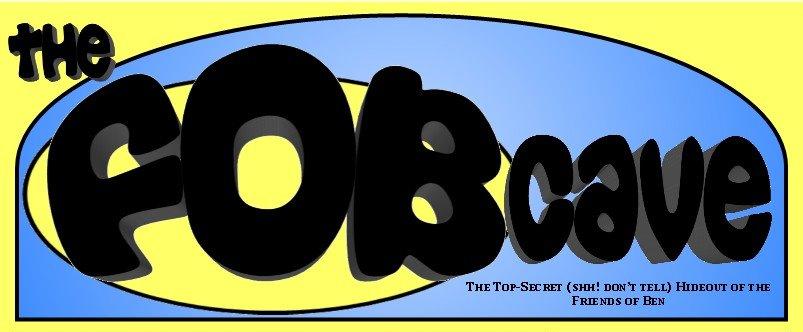 I was first exposed to Dora the Explorer when my niece was about three and in love with her. FoxyJ and I were new parents at the time and therefore even more self-righteous about parenting than we are now, so of course it appalled us that parents would ever let their children lay an eye on a television screen. Add to that the fact that Dora talks loudly in a sort of annoying voice and the plot of each episode is about as formulaic as you can get, and you get a rather disgusted Mr. Fob.
I was first exposed to Dora the Explorer when my niece was about three and in love with her. FoxyJ and I were new parents at the time and therefore even more self-righteous about parenting than we are now, so of course it appalled us that parents would ever let their children lay an eye on a television screen. Add to that the fact that Dora talks loudly in a sort of annoying voice and the plot of each episode is about as formulaic as you can get, and you get a rather disgusted Mr. Fob.Fast-forward a couple years and now you have a Mr. Fob and FoxyJ who, through the course of parenting a real life child, have been forced to lower our standards a bit (but don't worry; we still sneer appropriately at those parents whose standards are even lower). We've learned that it is good for the sanity of the parents for the child to absorb the soporific radiation of the television god for an hour or two a day, and it so happens that S-Boogie's drug of choice is Dora the Explorer. And you know what? It's precisely that formulaic plot and loud, annoying voice that make the show appeal to kids her age. Duh, they're kids. I would feel worse about so willfully not recognizing this earlier if not for the fact that, if I'm to believe the end credits on each episode, it took about thirty people with PhDs to figure it out.
Apart from the fact that Dora does an excellent job of exposing children to Hispanic culture and the Spanish language in a very natural way, I love her because she is a strong, relatively gender-neutral female character. There's an interesting conversation happening on a blog I read about gender in children's toys. It seems most toys marketed to boys are relatively gender-neutral, made in simple primary colors with few frills, while toys marketed to girls are all pink and sparkly. The message most girl toys seem to send is that you can aspire to be either a princess, waiting for your Prince Charming to come rescue you, or a teenage sexbot.
Dora, on the other hand, is a little girl who has adventures exploring the world, presumably inspired by her mother, an archaeologist. Even the episode "Dora's Fairytale Adventure," which is an obvious sellout to the Disney princess phenomenon, has Dora complete certain tasks in order to become a princess, which she does in order to save her friend Boots the Monkey. In this loose retelling of Sleeping Beauty, the male monkey is the passive "damsel in distress" and the girl is the active "knight in shining armor."
Telling of Dora's success in avoiding gender stereotypes is the fact that boys like her as much as girls do. Now, the existence of the spinoff show about Dora's cousin, Diego, says that marketers did see the need to create a boy character to appeal to boys, but within my social circle at least I know of several little boys who are as obsessed with Dora as S-Boogie is.
And the little boys who think Dora is a "girl show" obviously have parents who are not as stellar in teaching egalitarianism as FoxyJ and I are. Thank goodness for parents like us.

.
ReplyDeleteThank goodness.
O's fave is SuperWhy. I haven't seen it yet, but it sounds like the sort of thing you would approve of.
"The Power to Read!"
Honestly I still think that Sesame Street is the best kids show there is. I haven't seen it in years of course, and I hear it has changed, but Sesame Street from the 80s and early 90s is just amazing.
ReplyDeleteI really liked Eliza Thornberry on The Wild Thornberrys (let's ignore the fact that I was about about 20 when the show started, and that I have no children).
ReplyDelete